The Drip Feed Method Explained: Benefits, Examples, and Best Practices
Learn how the drip feed method keeps learners motivated with step-by-step lessons and automated content release.
Learn how the drip feed method keeps learners motivated with step-by-step lessons and automated content release.

Studies show that our attention spans have shrunk to just a few minutes, making large doses of learning overwhelming. Too much content at once leads to confusion, forgotten material, and unfinished courses.
Drip feed solves this problem by delivering lessons in small, manageable chunks over time. Learners gain access gradually, absorb material effectively, and apply knowledge step by step.
This method boosts retention, motivation, and engagement while preventing burnout. For course creators, drip feed provides control over pacing, builds anticipation, and encourages learners to return consistently for new content.
In this guide, you will learn what drip feeding is and why it matters, how it works, and how to implement it effectively in your courses.
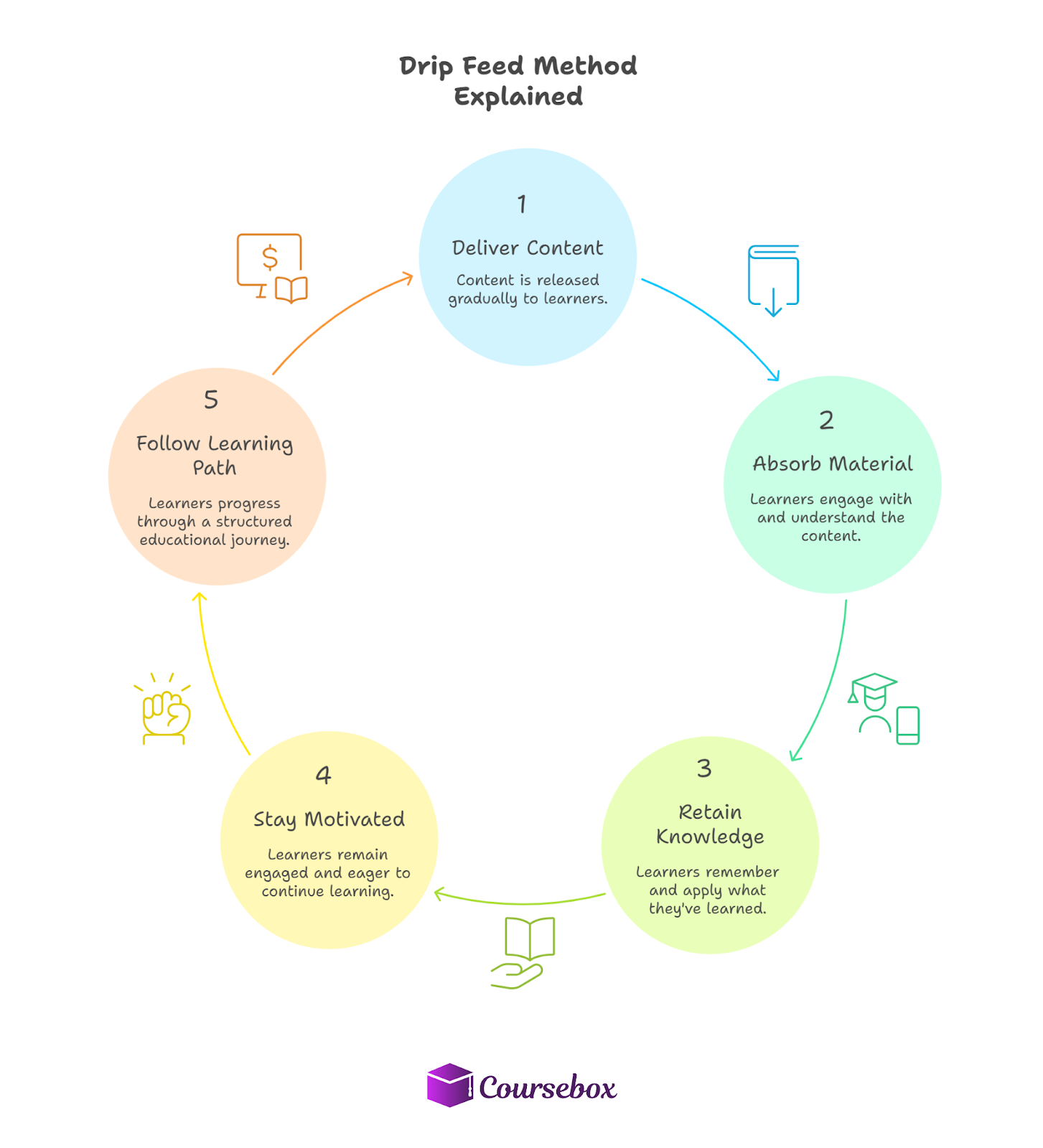
Drip feed means delivering learning content gradually instead of giving learners access to everything at once. Lessons, quizzes, videos, and assignments unlock over a set schedule—daily, weekly, or according to a custom plan.
This method prevents information overload and helps learners absorb material step by step. Unlike self-paced courses, where students can access all content immediately, drip feed controls the flow, ensuring each module is understood before moving on.
By spacing out content, learners retain knowledge better, stay motivated, and follow a clear learning path, making training more effective and engaging.
Understanding the difference between drip-feed courses and self-paced learning helps you design the most effective training experience.

Drip-feed learning works best for complex courses, multi-week programs, or when introducing sequential skills. It’s perfect for building anticipation, reinforcing learning, and increasing long-term engagement.
Self-paced learning suits shorter courses, refresher content, or learners who need flexibility. Ideal for teams with varying schedules or experienced professionals who want quick access to all content.
By choosing the right delivery method, course creators can improve engagement, maximize retention, and ensure learners complete their programs successfully.
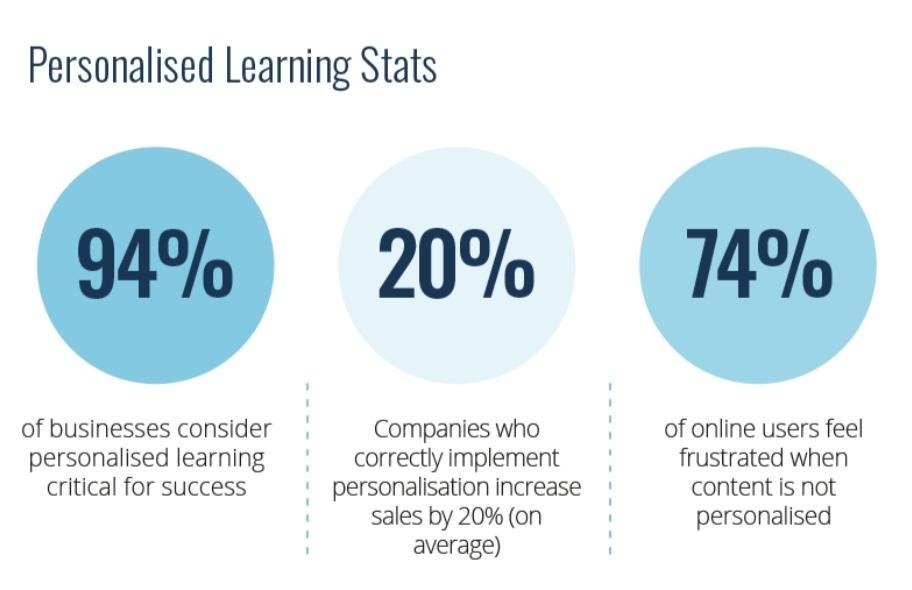
Using the drip feed method offers multiple advantages for both learners and course creators.
Gradual delivery of course content aligns with spaced learning principles, helping learners process and remember information more effectively. This approach reduces cognitive overload and strengthens long-term memory.
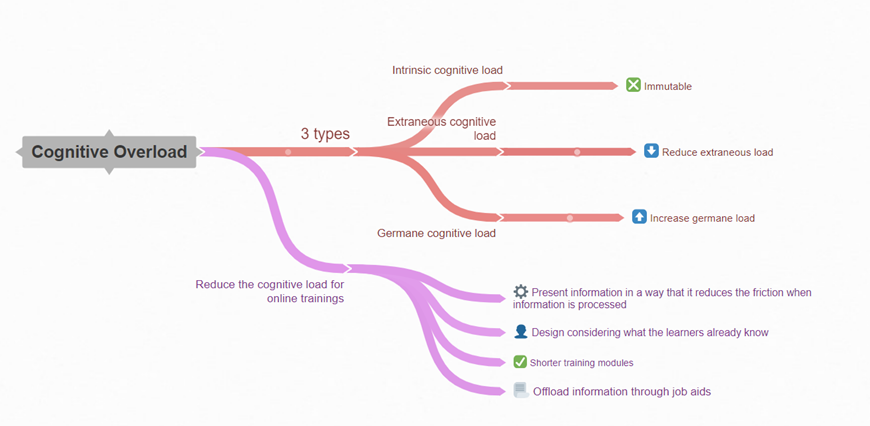
Drip-fed courses build anticipation. Learners look forward to unlocking new lessons, which keep them actively participating and motivated throughout the program.
By providing content in smaller, manageable chunks, learners avoid feeling overwhelmed. This allows them to focus on one training module at a time and apply new knowledge before moving forward.
Drip-feeding supports subscription-based models or tiered access, which can increase revenue and encourage learners to stay enrolled longer.
Structured content delivery shows learners that the course is well-designed and thoughtfully organized. This professional approach enhances credibility and learner confidence.
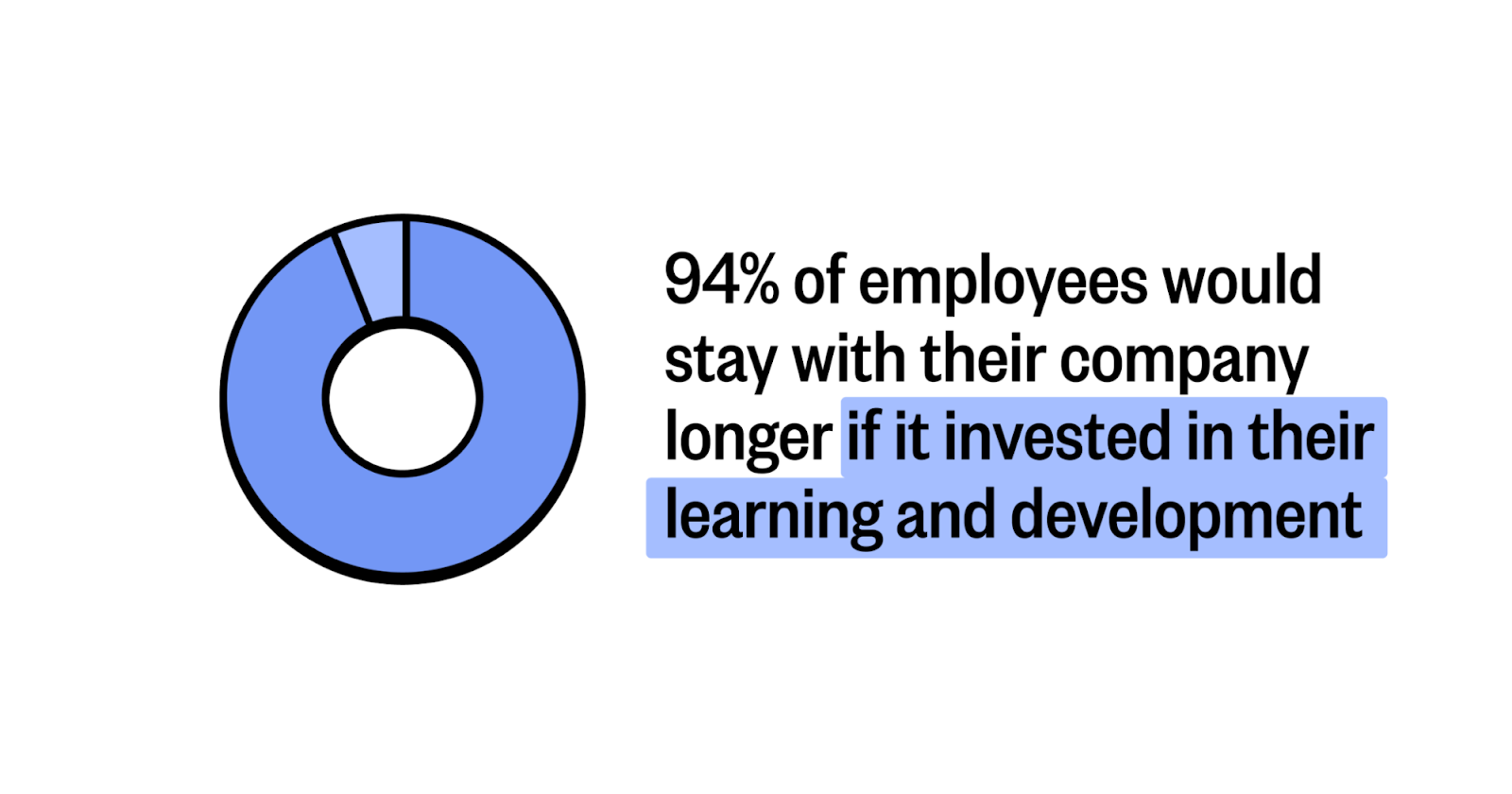
Drip-feeding delivers course content in small, scheduled portions, helping learners absorb information gradually and apply it effectively. Here’s how it works in practice:
This structured approach gives learners time to practice and internalize skills, improving retention and confidence.
Drip-feeding also allows instructors to adjust pacing, send reminders, or provide supplemental resources between lessons, which enhances the overall learning experience.
Drip-feeding works best when combined with careful planning and the right tools. Follow these tips to maximize learner engagement and retention:
Select a learning management system that supports timed content release and automated scheduling. Tools like Coursebox AI can simplify drip-feed setup by automating lesson delivery, tracking learner progress, and sending reminders.

Map out training modules, lessons, and release dates in advance to ensure a smooth learning journey. This helps avoid content overload and keeps students motivated.
Group learners to progress together on a set schedule. Cohorts encourage collaboration, accountability, and discussion.
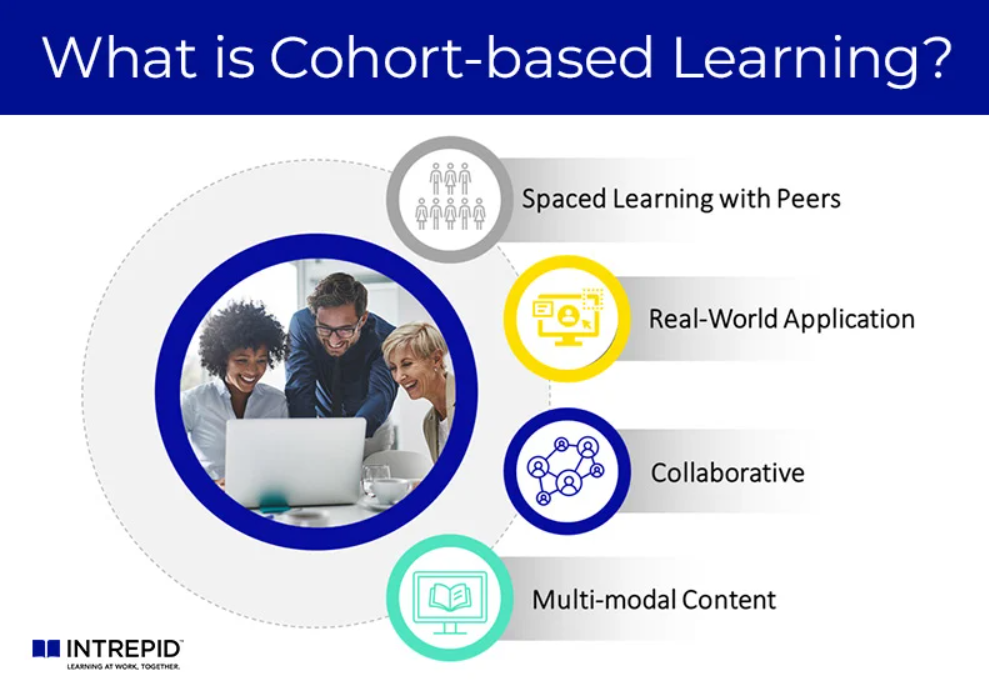
Keep lesson release gaps predictable. This consistency helps learners anticipate new content and retain knowledge more effectively.
Monitor learner completion, quiz results, and engagement. Refine your drip schedule based on these insights for optimal outcomes.
Drip-feeding content helps you market online courses and increase passive income at the same time. Gradually releasing lessons keeps learners coming back and builds excitement, especially with subscription-based pricing. Students pay over time as new modules unlock instead of all at once.
Using email drip campaigns can automate notifications whenever a new lesson becomes available. This keeps students engaged, encourages them to complete courses, and reminds them about upcoming content. Drip-feeding turns your course delivery into a marketing tool that drives engagement, trust, and revenue.
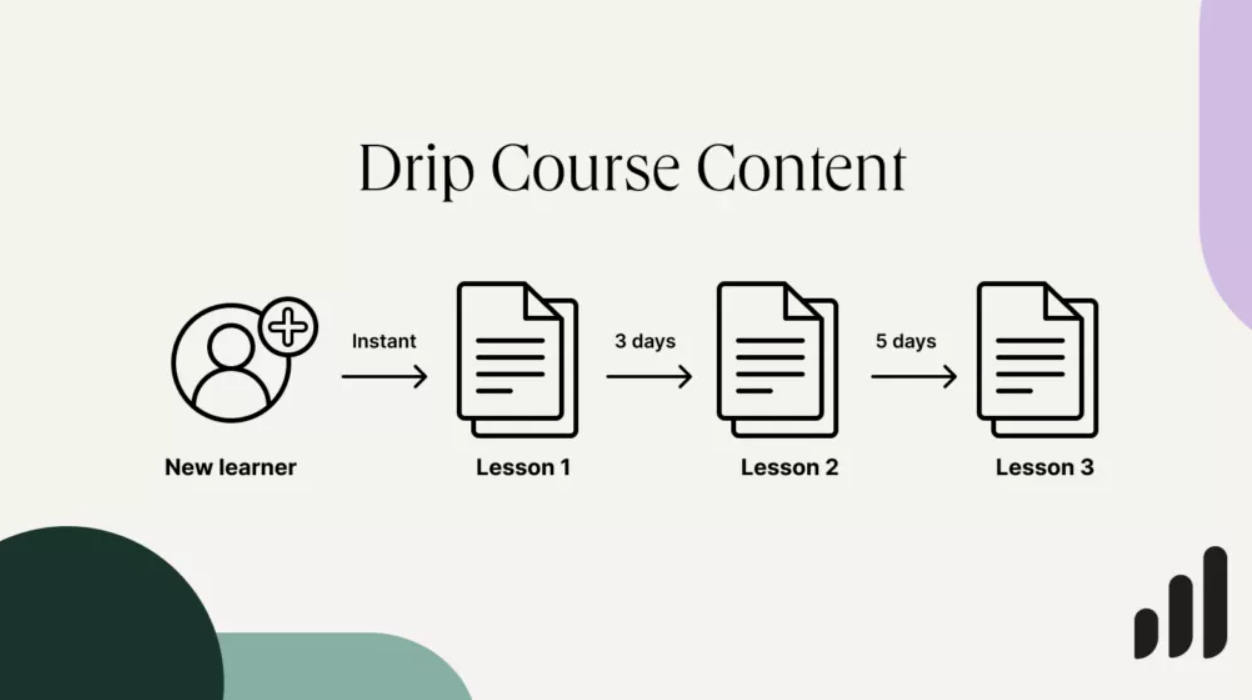
Drip-feeding courses works best with a platform that can handle scheduling and automation. Coursebox AI allows you to plan when each lesson or module is released, automatically send reminders to learners, and keep track of who has completed which sections.
You can see engagement, quiz scores, and progress all in one dashboard, making it easy to adjust the course as needed. The platform also helps you organize content in a clear, step-by-step way so learners stay motivated and don’t get overwhelmed.
Other platforms like LearnWorlds and LearnDash also support drip-feeding, but Coursebox AI makes planning, monitoring, and delivering content faster and simpler while giving a professional learning experience.
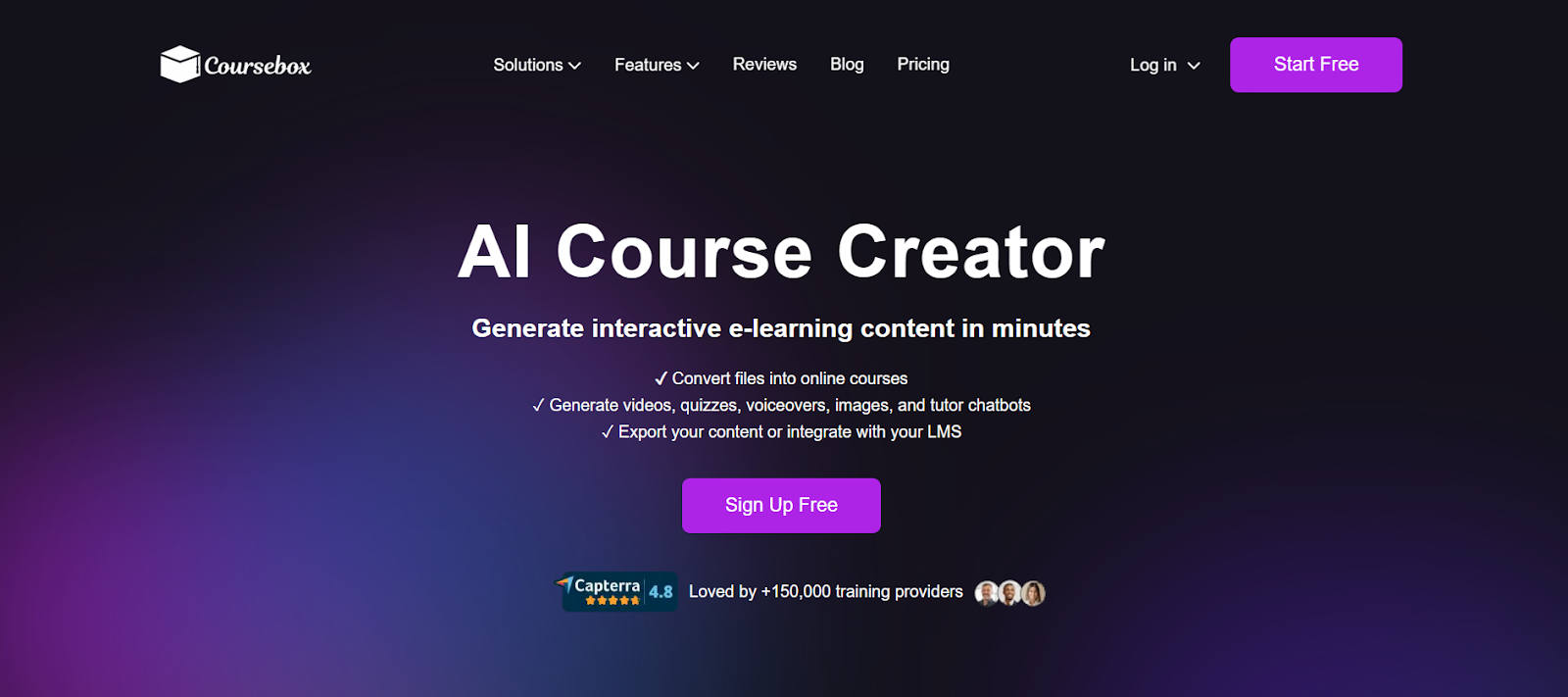
Drip-feeding courses offers a powerful way to keep learners engaged, improve knowledge retention, and create consistent revenue streams. By delivering content in manageable chunks, students stay motivated, absorb information more effectively, and look forward to each new module.
Platforms like Coursebox AI make implementing drip-feed courses simple, with automated scheduling, progress tracking, and notifications. Using the right tools, you can turn your online courses into a smooth, professional learning experience while boosting course completion rates and overall revenue.
Ready to see how it works? Book a free demo of Coursebox AI today and start creating seamless, engaging drip-feed courses for your learners.
Yes. The drip-feed method works exceptionally well for corporate training because it delivers content gradually, helping employees retain knowledge and apply it on the job. It prevents information overload, increases engagement, and ensures consistent learning across teams, especially in compliance or skill development programs.
Drip-feeding keeps learners accountable by providing structured milestones and regular progress checkpoints. Since content unlocks gradually, learners must complete each section before moving forward. This pacing builds discipline, prevents procrastination, and motivates consistent participation, leading to higher course completion and better overall learning outcomes.
The most effective drip-fed courses combine varied content types like short videos, quizzes, assignments, and discussion prompts. Mixing media keeps learners engaged while reinforcing learning at each stage. Supplementing lessons with reminders or reflection activities between releases helps learners stay connected and apply new skills continuously.
Get started for free today.
